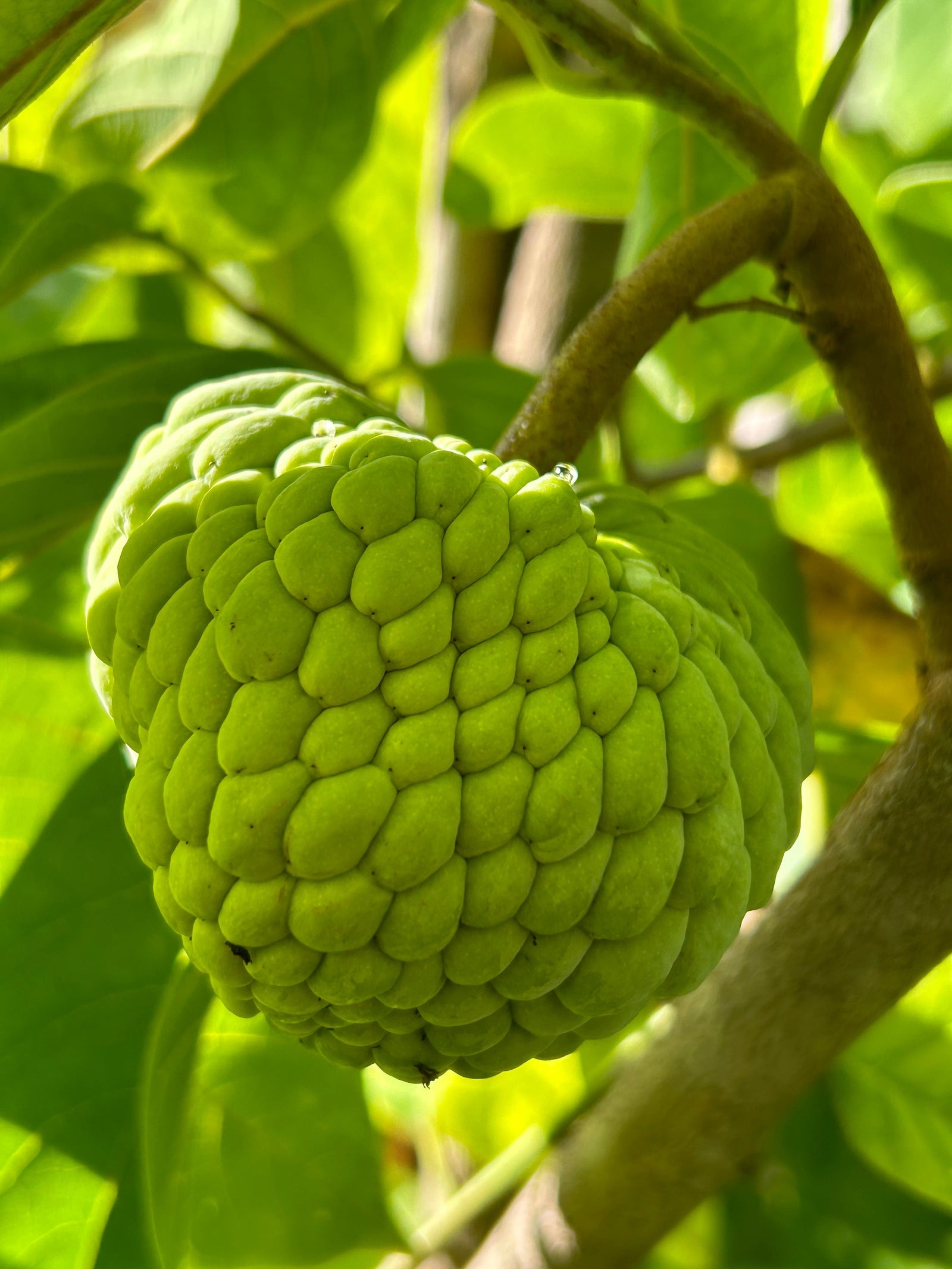If you’ve never heard of Atemoya, you’re not alone. When I first started working at Incredible Edible Landscapes, all the fruit in the Annona family were foreign to me. I'd seen a few on the table at my Cuban grandmother's house, my Mima, but at the time I was not open to trying any of these strange dinosaur looking fruits.
Working at a tropical fruit tree nursery has really opened my mind and I think that (like me!) you'll find that once you taste an Atemoya, you won’t forget it.
This unique fruit is a hybrid between two tropical favorites in the Annona family: the sweet, seedy Sugar Apple(Annona squamosa) and the creamy, custard-like Cherimoya (Annona cherimola). Together, they’ve produced a fruit that many of our customers say is hands-down their favorite fruit of all time.
What Does Atemoya Taste Like?
Imagine the sweetness of a ripe pear, the floral notes of a strawberry, and the tang of pineapple — all wrapped up in a soft, chewy, tropical custard. That’s Atemoya.
The fruit has a bumpy green (or pink!) skin with “scales” that peel away easily when ripe, revealing luscious white flesh inside. It’s juicy, fragrant, and a little bit addictive. It’s also one of those fruits that truly tastes better than it looks.
_____________________________________________________________________________
'Lisa' Atemoya - a pink skinned beauty!
_____________________________________________________________________________
Why Grow Atemoya in South Florida?
Atemoyas love South Florida. They’re well-adapted to our subtropical climate and produce reliably with just a little care. The trees are:
-
Semi-deciduous, meaning they shed leaves in winter
-
Fast-growing in warm months
-
Relatively compact (especially with regular pruning)
-
Drought-tolerant once established
-
Cold hardy to about 28°F
They also fruit on new growth and one-year-old wood, which means proper pruning = more fruit. A good late winter/early spring trim encourages a strong spring flush, and a mid-summer trim can even set you up for a second crop.
Atemoya flowers just prior to opening
_____________________________________________________________________________
Do I Need to Hand Pollinate?
Atemoyas can produce fruit on their own, especially varieties like Geffner and Page, but hand pollinating can significantly increase fruit set, size, and uniformity — especially if you want to make the most of each tree. It’s simple, meditative, and highly effective.
'Geffner' in the ground at Incredible Edible Landscapes in Loxahatchee, Florida
_____________________________________________________________________________
Our Favorite Varieties (And Why You’ll Love Them)
All Atemoya trees in our nursery are 20% OFF next week 7/29-8/2, so it’s the perfect time to try one out! Here are a few standout varieties:
🌱 Geffner – The reliable workhorse of the Atemoya world. Produces well without hand pollination. Green-skinned fruit with excellent flavor.
🌱 Lisa – A beauty! Produces pink-tinged fruit with light berry flavor. Bred by Har Mahdeem in the 1990s, and a favorite to many.
🌱 Page – High productivity without hand pollination. Great flavor, but keep an eye out for fruit that splits when fully ripe.
🌱 Phet Pak Chong (PPC) – A Thai favorite with sugar apple-like looks and custardy flavor. More compact growth habit = great for smaller yards.
🌱 Priestly – Big, bold, and sweet! Less productive than others, but a real winner with hand pollination.
Ready to Plant One?
Whether you're a long-time Annona lover or brand new to the family, Atemoya is a must-have for any tropical or subtropical fruit enthusiast. These trees grow fast, fruit well, and offer a flavor experience like no other.
👉 Browse our full selection of Atemoya trees here
Or come by the nursery and see them in person — we’ll be happy to help you pick the perfect variety for your space.





